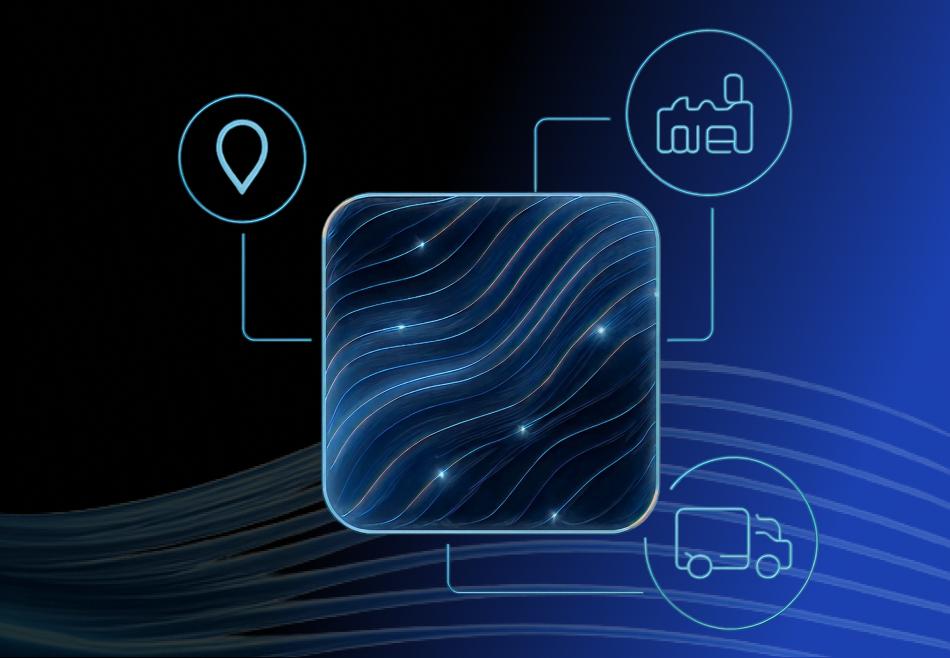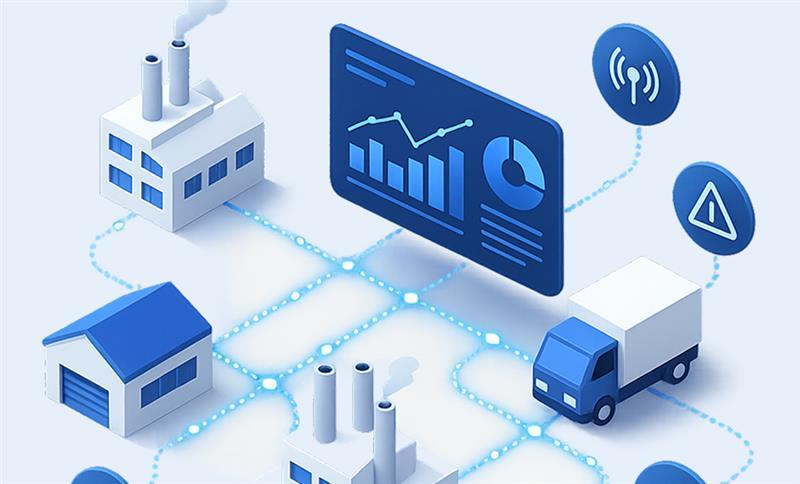Introduction
The distribution industry, encompassing both wholesale and retail, usually features physical stores and warehouses acting as middlemen connecting manufacturers and consumers. Since we wrote this blog, the industry has been changing because of shifting consumer preferences, increased competition, rapid digital and e-commerce progress, and rising real estate expenses.
To stay competitive in a rapidly evolving market, distribution companies are increasingly embracing technology solutions. As consumers increasingly expect efficiency and transparency, distribution companies need to adjust their strategies to meet these changing demands In this context, the use of technologies like blockchain or distributed ledger systems is becoming more popular as a way for the distribution industry to improve its agility and competitiveness.
Blockchain: Essential in Today’s World
Between 2016 and 2017, the distribution industry encountered major issues, like the counterfeit cotton scandal in Egypt and the horse meat scandal. These events eroded consumer trust and exposed vulnerabilities in the supply chain. However, in the years since these incidents, blockchain technology has advanced considerably.
Today, the distribution industry should no longer view blockchain as a technology of the future. Blockchain has evolved to offer robust solutions that address the very issues that tarnished consumer trust in the past. To address these challenges, retail and wholesale distribution companies are using distributed ledger technology to improve efficiency, transparency, product tracking, and streamline their business operations. Through secure digital IDs, the industry can create a real-time, immutable record of a product’s entire lifecycle without relying on centralized control. These records are designed to be tamper-proof, requiring validation from multiple network participants before any alterations can be made.
Furthermore, it’s worth noting that there have been no significant new issues of a similar magnitude since those incidents. This shows the benefits of using blockchain and other technology solutions to improve product authenticity, supply chain transparency, and consumer trust. The industry’s continued commitment to leveraging blockchain reaffirms its dedication to maintaining the highest standards of integrity and accountability.
As demonstrated by current spending trends, industries with high transaction volumes are making substantial investments in blockchain technology. According to IDC, blockchain investments are rapidly escalating. To enhance efficiency within the distribution sector, it’s imperative for the industry to align itself with this pace.
Moreover, technology providers and service vendors are increasingly collaborating to harness blockchain’s potential, beyond cryptocurrencies. They are actively adopting various blockchain solutions for supply chain shipment tracking, transaction record-keeping for audits, and regulatory compliance. This technology has matured to the point where it is not merely a futuristic concept but a practical tool that can reshape the future of distribution.
What Is Blockchain and Distributed Ledger Technology (DLT)?
Blockchain and Distributed Ledger Technology (DLT) are groundbreaking systems for securely recording and handling transactions and data in a decentralized and tamper-proof way. These technologies have evolved and adapted to various use cases, with new advancements continually emerging.
At its core, blockchain is a database that organizes data into blocks, which are securely linked in a chronological chain. Once data is added to a block, it becomes unchangeable, ensuring the integrity and immutability of all stored transactions. Recent improvements have enhanced scalability and efficiency, making blockchain more versatile and able to handle a broader range of uses.
DLT, which encompasses blockchain, extends beyond the confines of a traditional ledger. It includes innovations like Directed Acyclic Graphs (DAGs) and Hybrid Blockchains. DAGs offer a structure that doesn’t rely on a linear chain, making them even more scalable and energy efficient. Hybrid Blockchains combine the strengths of both public and private chains, enabling customizable levels of accessibility while maintaining security.
One of the significant developments is the rise of permissioned blockchains. These private or consortium networks restrict access to authorized participants, providing more control and privacy. They are ideal for use in cases where strict governance is necessary, such as in the financial sector.
Furthermore, smart contracts, which are contracts where the terms are directly written into code and execute themselves, have become more popular. These contracts automate and enforce agreements without the need for intermediaries.
Distributed ledger technology allows stakeholders to access important information with a single scan, simplifying operations and cutting costs in the distribution industry.
In summary, blockchain and DLT have evolved beyond their initial conceptions. They now offer a broader range of applications, increased scalability, energy efficiency, and more customizable access control. As these technologies continue to advance, their impact on industries, from finance to supply chain, will only expand.
Securing the Blockchain: Examining Current Blockchain Security
- Blockchain Security: It’s widely known as one of the most secure systems.
- Cryptographic Security: Blockchain uses advanced cryptographic methods to record transactions, making it extremely difficult for hackers or intruders to tamper with the system.
- Resource Requirements: To access or alter a record in a blockchain, an attacker would need to control over 51% of the network’s computing resources. This is a formidable task due to the decentralized and widely distributed nature of blockchain networks.
- Decentralization: Blockchains are inherently decentralized, operating across a network of peers. Each peer has its private key or digital signature, providing an additional layer of security.
- Intrusion Detection: If there’s an attempt to break in, the network rapidly spots the unauthorized activity, making the intruder’s digital signature useless and visible to all network users.
- Solid Security: While no system is entirely immune, blockchain’s use of cryptography, decentralization, and network agreement makes it very secure and resistant to tampering. This makes it a strong defense against hacking and unauthorized access.
Top 5 Areas of Blockchain Impact on Distribution
Blockchain has had a profound and lasting impact on distribution, even after seven years of use:
- 1. Revolutionizing Payments
- 2. Elevated Transparency and Counterfeit Prevention
- 3. Slashing Business Costs
- 4. Enhanced Compliance and Regulatory Efficiency
- 5. Modernizing Talent Acquisition
Figure 1:Blockchain’s Impact on Distribution

01.Revolutionizing Payments
- Seven years have seen significant advancements in blockchain-based payment solutions in the distribution industry. Traditional banking systems fees and delays have pushed businesses towards more efficient and cost-effective blockchain-based payment options. For example, sending $200 from the United States to Asia, which used to cost up to $12, can now be done for a much lower cost, thanks to the ongoing expansion of blockchain.
02.Elevated Transparency and Counterfeit Prevention
- Blockchain’s influence on transparency and counterfeit prevention has only deepened. Many players in the distribution system, including logistics, vendors, regulators, and payment partners, still gain advantages from blockchain’s shared ledger, which guarantees real-time accountability throughout the supply chain. For example, blockchain empowers retailers to trace a product’s origin and its journey, including vital cold chain conditions. Countering counterfeits, especially in high-value sectors like pharmaceuticals, has seen ongoing success. Blockchain’s secure trail of custody logs continues to safeguard supply chain integrity and tackle the persisting issue of counterfeit products.
03.Slashing Business Costs
- Over the past seven years, the reduction of business costs through blockchain has become even more streamlined. Blockchain has remarkably reduced paperwork at each stage of the product’s lifecycle, from pre-manufacturing to sale. This streamlined efficiency has not only saved time but has become a cornerstone in reducing operational costs across the industry.
04.Enhanced Compliance and Regulatory Efficiency
- Blockchain’s contribution to compliance and regulatory efficiency has matured. The technology’s ability to improve batch tracking ensures swift and precise responses to contamination or quality issues. Sharing unchangeable blockchain records with regulatory agencies has made compliance easier, leading to higher approval rates and fewer product recalls or rejections. This improves quality assurance in the industry.
05.Modernizing Talent Acquisition
- In talent acquisition, blockchain remains crucial for verifying candidates profiles. Now, blockchain technology provides increased transparency, enabling real-time verification of degrees, work history, certifications, and accomplishments, offering a modern and reliable way to handle hiring in the industry.
These updates illustrate how blockchain has evolved and continued to impact the distribution industry positively. Its significance in tackling current issues and enhancing efficiency and transparency is still strong and dynamic, even seven years after its first use.
Blockchain’s Impact on the Distribution Industry in the Past 5 Years
Over the last five years, blockchain’s influence on the distribution sector has grown and evolved, featuring several significant advancements.
Evolved Payments
Blockchain technology has continued to revolutionize payment systems within the distribution industry. What was once a cumbersome and costly process has become more streamlined and cost-effective. Remittances that were once costly and slow are now fast and cost-effective, benefiting businesses in the distribution network.
Deepened Transparency and Security
Blockchain’s role in enhancing transparency and security has only grown more pronounced. Distributed ledger technology ensures that every stage of a product’s journey, from manufacturing to the end location, is securely and transparently recorded. This secure tracking system not only shows how a product was made but also reveals how it was handled during shipping. This heightened transparency is essential for quality assurance and maintaining the integrity of the supply chain.
Continued Cost Reduction
Blockchain’s role in reducing operational costs by minimizing paperwork remains a fundamental benefit. Distributed ledger technology enables stakeholders to access vital information with just one scan, greatly simplifying operations and reducing costs in the distribution industry.
Regulatory Efficiency and Compliance
Blockchain’s role in improving batch tracking and simplifying compliance procedures has continued to mature. It has become a trusted tool for maintaining efficient regulatory compliance and ensuring product quality. It has reduced the risk of recalls, increased product approval rates, and is crucial for maintaining quality standards.
Enhanced Talent Acquisition
In the talent acquisition arena, blockchain has continued to modernize the hiring process. It offers a high level of transparency and trust in verifying candidates’ profiles, making the hiring process more reliable and secure.
Conclusion
Blockchain is not a distant concept but a tangible and indispensable part of the distribution industry today. Distributors who have embraced blockchain technology have gained significant advantages in terms of efficiency, transparency, and competitiveness. Five years of continued innovation have led to faster payment processing, reduced costs, and enhanced product integrity.
As we move forward, the continuous growth of blockchain holds the potential for additional inventive solutions and uses in distribution, solidifying its role as a pivotal and transformative technology in the industry’s ongoing progress.







